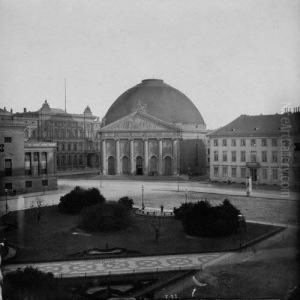Albrecht Meydenbauer Paintings
Albrecht Meydenbauer, a name not immediately recognized in the traditional pantheon of artists, played a pioneering role in the intersection of art and science. Born on November 30, 1834, in Wuppertal, Germany, Meydenbauer's journey was not that of a conventional artist. His legacy is deeply entrenched in the development of photogrammetry, a field that combines photography and surveying to make measurements from photographs, enabling the precise mapping of environments and architectures.
Meydenbauer's interest in photography began in his youth, but it was his experience as a building surveyor that truly shaped his future contributions. In 1858, after a near-fatal fall while attempting to measure a church, Meydenbauer envisioned a safer and more accurate method of capturing architectural details. This led to his pioneering work in photogrammetry. By 1867, he had formalized his idea into a practical methodology, which he continued to refine and promote throughout his life.
Although Meydenbauer's work was initially met with skepticism, he persevered, and in 1873, the Prussian government funded his efforts, leading to the establishment of the Royal Prussian Photogrammetric Institute in 1885, with Meydenbauer at its helm. This institution was the first of its kind and marked the official recognition of photogrammetry as a scientific discipline. Meydenbauer's work laid the groundwork for the documentation of cultural heritage sites and had profound implications for the fields of architecture, archaeology, and urban planning.
Throughout his career, Meydenbauer undertook the photogrammetric documentation of numerous historic buildings and sites across Germany. His meticulous work not only preserved the architectural details of these sites for future generations but also demonstrated the potential of photography as a tool for scientific and historical documentation. Meydenbauer's vision extended beyond his immediate work; he was an advocate for the preservation of cultural heritage and understood the importance of documenting monuments for posterity.
Albrecht Meydenbauer retired in 1909, leaving behind a legacy that would inspire the future development of aerial and satellite photogrammetry. He passed away on May 15, 1921, in Bad Godesberg, Germany. Today, Meydenbauer is celebrated as a visionary who bridged the gap between art and science, transforming the way we capture and understand the physical world. His contributions have had a lasting impact on various disciplines, illustrating the profound influence of innovative thinking at the intersection of technology and the humanities.
